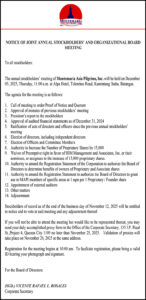The weight of preparation used to fall heavily on corporate secretaries. For generations, running a board meeting meant wrestling with mountains of paper – dense reports, painstakingly assembled by hand. It was a world of physical documents and the constant threat of wasted effort.
Imagine the pressure of a critical board meeting looming, only to discover a last-minute agenda item. The solution? A frantic scramble to reprint the entire package, a costly and time-consuming ordeal. Every change felt like starting over.
The aftermath wasn’t much easier. Minutes, the official record of decisions, were often delayed for days, even weeks, as secretaries painstakingly transcribed notes. Vital details risked fading from memory, and the opportunity for immediate follow-up was lost.

This wasn’t simply an inconvenience; it was a systemic vulnerability. Important information was easily misplaced, revisions were prone to error, and the entire process lacked the speed and agility needed for effective governance. The old way was a slow burn of inefficiency.





